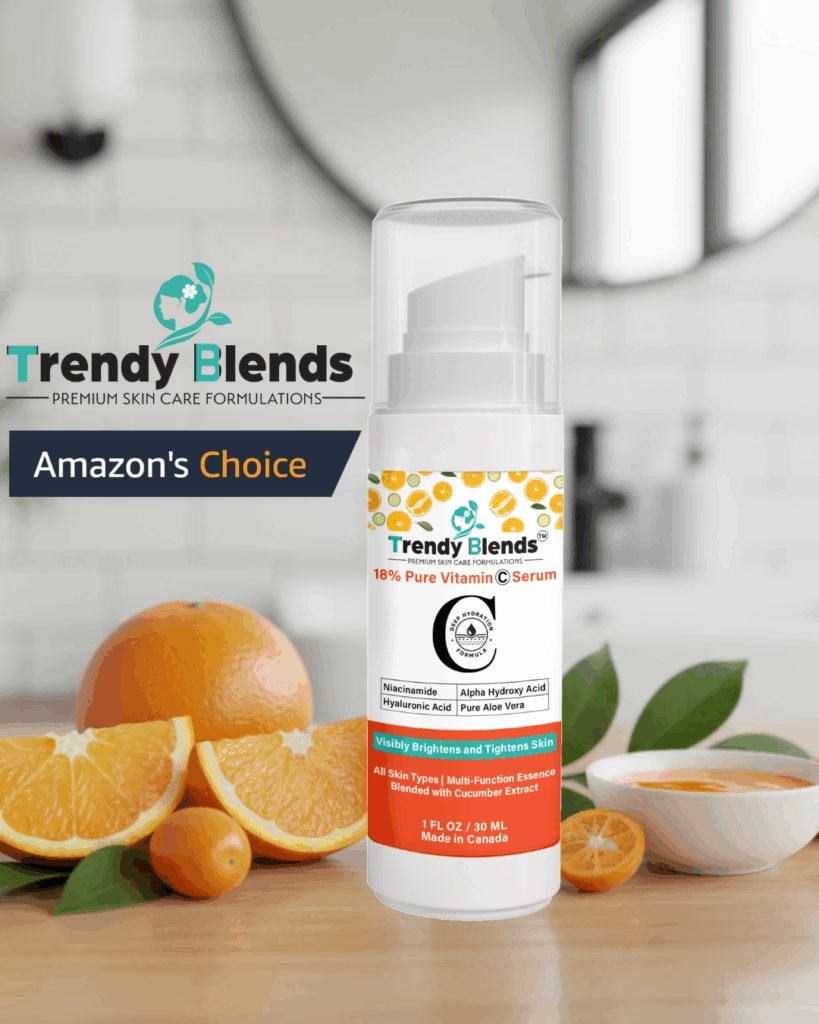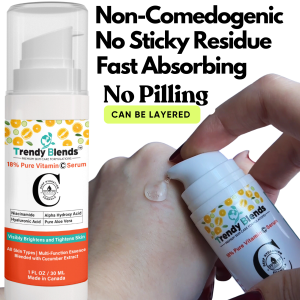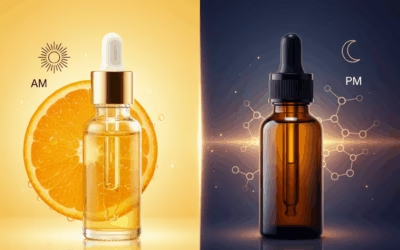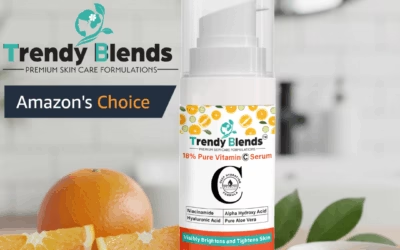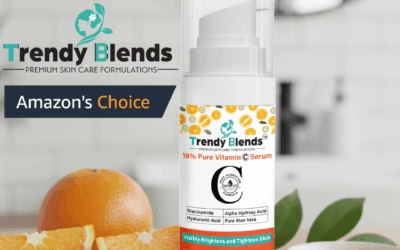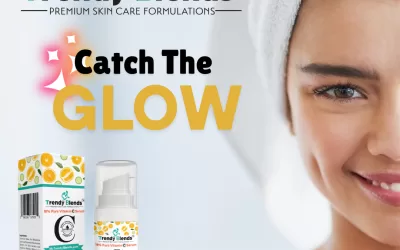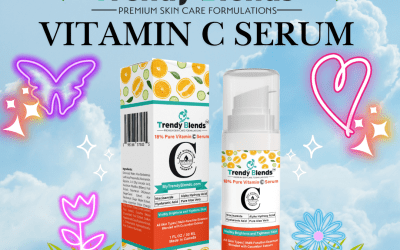9 Exclusive differences between Vitamin C Derivatives.
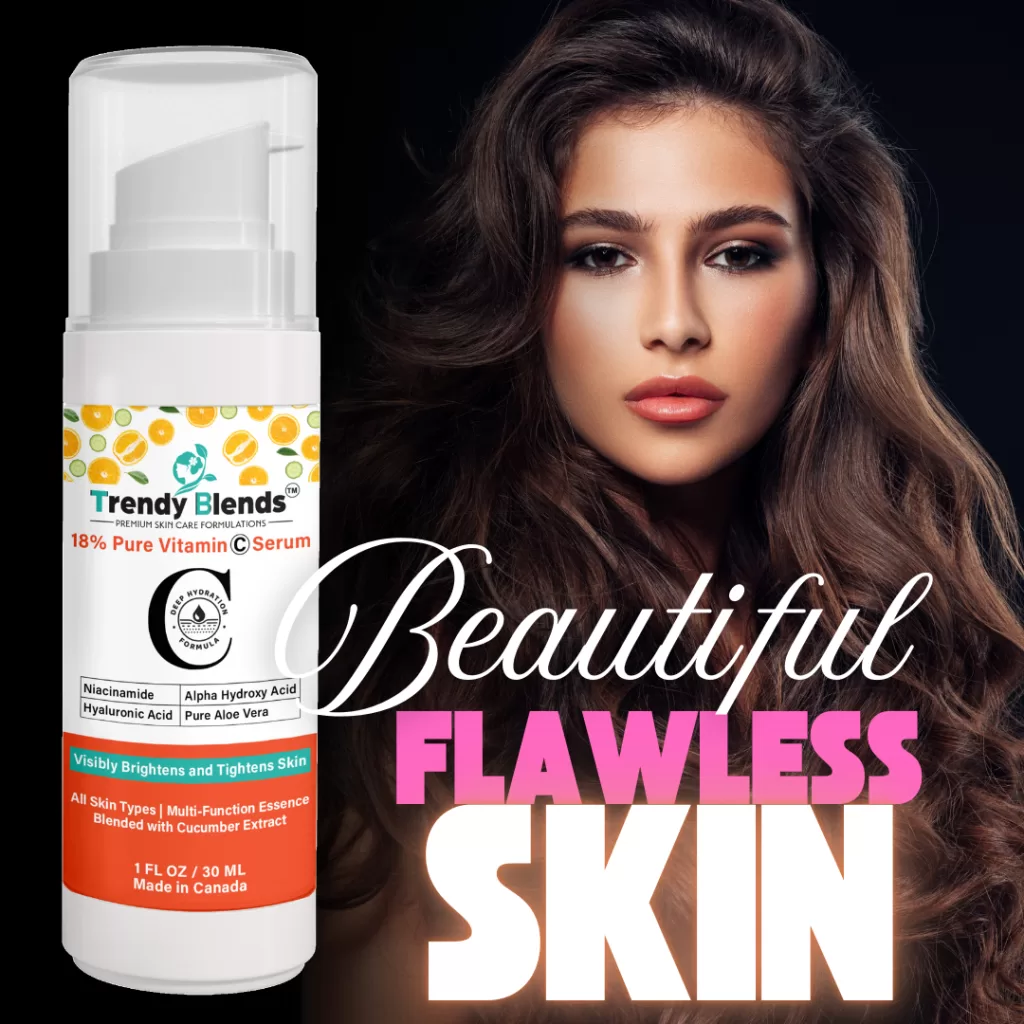
Table of Contents
Decode Your Glow: The 9 Game-Changing Differences Between Vitamin C Derivatives
In the luminous world of skincare, one ingredient consistently holds the title of undisputed champion: Vitamin C. It’s the powerhouse antioxidant celebrated for its ability to fend off environmental aggressors, brighten skin tone, and kick-start collagen production for that firm, youthful bounce. Everyone from dermatologists to beauty editors sings its praises, and the quest for the perfect Vitamin C serum has become a modern-day skincare epic.
But as one embarks on this quest, a complex landscape unfolds. The labels don’t just say “Vitamin C”; they list names like L-Ascorbic Acid, Sodium Ascorbyl Phosphate, and Tetrahexyldecyl Ascorbate. Suddenly, the simple journey to brighter skin feels like a chemistry exam. What are these variations? Are they all the same?

The answer is a resounding no. These are Vitamin C derivatives, and understanding their unique personalities is the key to unlocking your skin’s ultimate potential. This isn’t just about choosing a product; it’s about making an empowered, educated decision that aligns perfectly with your skin’s needs and goals. It’s time to move beyond the confusion and step into the light.
Let’s decode the science and discover the 9 exclusive differences that will transform how you shop for a Vitamin C serum forever.
The Foundation: What Is a Vitamin C Derivative?
Before we dive into the differences, let’s establish our starting point. The purest, most biologically active form of Vitamin C is L-Ascorbic Acid (L-AA). When a product contains L-AA, the skin can use it directly. It’s incredibly effective, but it comes with a catch: it’s notoriously unstable. It oxidizes (breaks down) quickly when exposed to light, air, and heat, turning that lovely clear serum into a less effective, brownish liquid. It also requires a very low pH to remain stable, which can be irritating for many skin types.
To solve this problem, cosmetic chemists created derivatives. These are molecules that have been chemically modified from L-Ascorbic Acid to be more stable. Once applied to the skin, enzymes within the skin convert these derivatives back into L-Ascorbic Acid, allowing them to work their magic without the instability and irritation.
Now, let’s explore the crucial differences that set them apart.
Difference #1: The Core Conflict – Pure Power vs. Supreme Stability
This is the central theme in the Vitamin C story.
- L-Ascorbic Acid (L-AA): The Gold Standard. It delivers the most potent, direct results because it requires no conversion. It’s the benchmark against which all derivatives are measured. However, its Achilles’ heel is its fragility. An L-AA serum can lose its potency in a matter of months, or even weeks, if not formulated and stored perfectly in an opaque, air-tight container.
- The Derivatives: The Stable Champions. Molecules like Sodium Ascorbyl Phosphate (SAP), Magnesium Ascorbyl Phosphate (MAP), and Ethyl Ascorbic Acid are built for the long haul. They don’t degrade as quickly, meaning the last drop of your Vitamin C serum is just as effective as the first. This stability provides peace of mind and ensures a consistent, reliable performance. For anyone investing in their skincare, knowing their product will remain effective is a monumental advantage.
Difference #2: The pH Puzzle – A Matter of Sensitivity
The pH level of a product dramatically affects how it feels and interacts with the skin. Our skin’s natural pH is mildly acidic, typically around 4.7 to 5.75.
- L-Ascorbic Acid: To be effective and penetrate the skin, L-AA must be formulated at a very low pH, usually below 3.5. This high acidity is what can cause stinging, redness, and irritation, especially for those with sensitive, reactive, or dry skin.
- The Derivatives: A Gentler Approach. Most derivatives are effective at a pH closer to the skin’s natural state (between 5.0 and 7.0). This makes them significantly less irritating and a godsend for sensitive skin types. If you’ve ever tried a Vitamin C serum and felt that tell-tale tingle or flush, switching to a derivative-based formula could be the solution that allows you to reap the benefits without the discomfort.
Difference #3: The Conversion Question – Direct vs. Indirect Action
This is where the science gets fascinating. How a form of Vitamin C gets to work determines its speed and overall effect.
- L-Ascorbic Acid: Acts directly upon application. There’s no waiting period and no conversion process needed. It gets to work immediately, scavenging free radicals and signaling collagen production.
- The Derivatives: A Timed-Release Effect. Most derivatives are like a “pro-drug”—they are inactive until the skin’s enzymes metabolize them into L-Ascorbic Acid. This conversion process means the effect might be slightly less immediate or potent than a high-concentration L-AA, but it also provides a more sustained, gentle delivery of Vitamin C over time. One exception is 3-O-Ethyl Ascorbic Acid, a newer derivative that is unique because it acts directly on the skin without needing conversion, yet it remains incredibly stable.
As renowned cosmetic dermatologist Dr. Evelyn Reed notes, “The best Vitamin C for you is the one you’ll use consistently. Derivatives have made this powerhouse antioxidant accessible to virtually every skin type, removing the barrier of irritation that many experienced with pure L-Ascorbic Acid.”
Difference #4: Solubility – A Tale of Oil and Water
This technical difference has a huge impact on how a product feels and how deeply it penetrates the skin. Our skin has a protective lipid (oil) barrier.
- Water-Soluble (Hydrophilic): L-Ascorbic Acid, Sodium Ascorbyl Phosphate, and Magnesium Ascorbyl Phosphate are all water-soluble. They work beautifully in the watery layers of the skin and are often found in lightweight, gel-like serums. They are fantastic for antioxidant protection on the surface and in the epidermis.
- Oil-Soluble (Lipophilic): Tetrahexyldecyl Ascorbate (THDA) and Ascorbyl Palmitate are oil-soluble. This unique property allows them to penetrate the skin’s lipid barrier more easily, potentially reaching deeper layers. This enhanced penetration makes them particularly effective for stimulating collagen and addressing deeper signs of aging. They often have a more emollient, luxurious texture suitable for drier skin types.
Difference #5: Targeted Benefits – Beyond the Basics
While all forms of Vitamin C are antioxidants, some derivatives have been shown to possess unique secondary benefits, allowing for a more targeted approach to skincare.
- For Acne-Prone Skin: Sodium Ascorbyl Phosphate (SAP) is the MVP. Studies have shown it has antimicrobial properties that can help reduce the bacteria associated with acne breakouts (P. acnes). A Vitamin C serum with SAP can offer brightening and anti-acne benefits in one powerful step.
- For Hydration and Dry Skin: Magnesium Ascorbyl Phosphate (MAP) has a hydrating effect on the skin and has been shown to improve skin barrier function. It’s an excellent choice for those whose primary concerns are dryness and uneven tone.
- For Potent Anti-Aging: Tetrahexyldecyl Ascorbate (THDA) is a star player. Its oil-soluble nature allows for deep penetration, and it’s celebrated for its remarkable ability to stimulate collagen synthesis, making it a favorite for targeting fine lines, wrinkles, and loss of firmness.
Difference #6: The New Generation – Advanced Innovation
The world of cosmetic science is always evolving, and Vitamin C is no exception. Newer derivatives offer the best of both worlds.
- 3-O-Ethyl Ascorbic Acid: As mentioned, this molecule is a true game-changer. It’s a direct-acting form of Vitamin C that is soluble in both water and oil, offering versatile formulation possibilities. It’s incredibly stable and provides potent brightening and collagen-boosting effects without the typical irritation of L-AA.
- Ascorbyl Glucoside: This is a very popular derivative, especially in Japanese and Korean skincare. It’s a stable form of Vitamin C bonded with glucose. Once on the skin, an enzyme called alpha-glucosidase slowly breaks it down, releasing L-Ascorbic Acid over an extended period. This provides gentle, sustained antioxidant benefits and is excellent for overall skin brightening.
Vitamin C Derivatives at a Glance
To make this easier to digest, here’s a quick-reference table summarizing the key players:
| Derivative Name | Type | Key Feature | Best For Skin Type/Concern |
|---|---|---|---|
| L-Ascorbic Acid (L-AA) | Water-Soluble | Most Potent, Direct Action | Normal, Oily, Resilient Skin |
| Sodium Ascorbyl Phosphate (SAP) | Water-Soluble | High Stability, Antimicrobial | Oily, Acne-Prone, Sensitive |
| Magnesium Ascorbyl Phosphate (MAP) | Water-Soluble | Stable, Hydrating | Dry, Sensitive, Dehydrated |
| Ascorbyl Glucoside | Water-Soluble | Very Stable, Gentle Brightening | All Skin Types, especially for Tone |
| Tetrahexyldecyl Ascorbate (THDA) | Oil-Soluble | Deep Penetration, Collagen Boost | Dry, Mature, Normal |
| 3-O-Ethyl Ascorbic Acid | Water & Oil Soluble | Direct-Acting, Very Stable | All Skin Types, especially for Anti-Aging |
| Ascorbyl Palmitate | Oil-Soluble | Mild Ester, often a booster | Very Sensitive, can be less potent |
Difference #7: The Power of Synergy – Better Together
A truly exceptional Vitamin C serum is rarely a solo act. The best formulations understand the power of teamwork. Vitamin C, in all its forms, becomes exponentially more powerful when paired with other antioxidants.
- The Classic Trio: The combination of Vitamin C, Vitamin E (Tocopherol), and Ferulic Acid is a well-studied powerhouse. Ferulic Acid and Vitamin E not only have their own antioxidant benefits but also work to stabilize Vitamin C and regenerate it after it has neutralized a free radical, essentially recharging its protective power. This synergy can increase the photoprotection of a serum by up to eight times.
- Modern Blends: Smart formulations today are taking this concept even further. A well-crafted serum might feature a stable Vitamin C derivative alongside ingredients like Glutathione, Hyaluronic Acid, or Niacinamide to create a multi-faceted product that brightens, hydrates, protects, and repairs all at once. For instance, the Trendy Blends Vitamin C serum is a prime example of intelligent formulation. It is designed around the principle of synergy, leveraging a stable and effective Vitamin C derivative and pairing it with complementary antioxidants and hydrators to deliver a comprehensive, gentle, and highly effective brightening experience.
Difference #8: Formulation Aesthetics and Texture
The choice of derivative directly influences the final feel and user experience of the product.
- Formulas with L-Ascorbic Acid can sometimes feel slightly sticky or have a “hot dog water” scent due to the inclusion of Ferulic Acid for stability.
- Serums using water-soluble derivatives like SAP or Ascorbyl Glucoside are often lightweight, watery, or gel-like, absorbing quickly without residue. They are perfect for layering under makeup or for those who dislike the feeling of heavy products.
- Products centered around oil-soluble derivatives like THDA often have a richer, more lotion-like or oil-serum texture. They can feel incredibly nourishing and leave a dewy, glowing finish, which is often preferred by those with drier skin.
Difference #9: Cost and Longevity – The Investment Factor
Finally, there’s the practical consideration of price and value.
- L-Ascorbic Acid as a raw ingredient can be relatively inexpensive. However, the cost of a high-quality L-AA serum comes from the complex formulation technology required to keep it stable and effective, plus the premium packaging needed to protect it from degradation.
- Advanced Derivatives like THDA and Ethyl Ascorbic Acid are more expensive raw materials. This can translate to a higher upfront cost for the consumer. However, the value lies in their stability. You are paying for a product that will not lose its potency halfway through the bottle, ensuring you get the full benefits you paid for, from the first pump to the last. It’s an investment in guaranteed efficacy.
“Skincare is not an expense, it’s an investment in your confidence. It’s the ritual that prepares you to face the world with your best face forward.”
Your Empowered Choice
The journey to finding the perfect Vitamin C serum is no longer a mystery. It is a personal, empowering process of matching the right ingredient personality with your skin’s unique character.
Are you seeking pure, unadulterated power and have resilient skin? L-Ascorbic Acid might be your hero. Do you battle with sensitivity or breakouts? A Sodium Ascorbyl Phosphate formula will be your gentle guardian. Is your goal to deeply nourish your skin and combat the signs of aging? The penetrating power of Tetrahexyldecyl Ascorbate awaits.
Armed with this knowledge, you can now read an ingredient list not with confusion, but with confidence. You understand the nuances behind the science, the purpose behind each choice, and the potential locked within each bottle.
Your journey to luminous, healthy, and resilient skin begins with a single, informed step. Choose wisely, apply consistently, and prepare to meet your most radiant self. The glow you’ve been searching for is not just in the bottle—it’s in the power of your choice.
